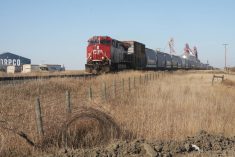The average age of Canadian farmers is 52, and that average has been steadily increasing for at least the past 20 years. The statistics were accepted, though not welcomed, and there wasn’t a concentrated effort put toward changing them – until lately.
Now there is a new and refreshing groundswell of interest, on the part of farm organizations and governments, in attracting new entrants to farming. The indications:
Add these developments to the steadfast support for young farmers on the part of the Canadian Federation of Agriculture and other groups, plus the activities of various provincial young farmer organizations, and there could finally be enough impetus to get programs in place.
Read Also

Agriculture needs to prepare for government spending cuts
As government makes necessary cuts to spending, what can be reduced or restructured in the budgets for agriculture?
Realistically, a comprehensive program to attract new entrants to farming will likely take years to bear fruit, so now is the best time to begin.
To develop such a program, the impediments to farming entry have to first be assessed. Several of the above-mentioned initiatives have done so. Among the barriers are prohibitively high costs to enter farming, its fluctuating and unpredictable returns and the lack of adequate risk management tools.
As well, farming has a negative image in many quarters. Farmers themselves don’t often celebrate successes, which fosters perceptions that agriculture is poorly paid with few rewards. The successful don’t talk about it and the unsuccessful complain about it.
Al Scholz, author of the APAS-commissioned study, listed several ways to attract young farmers and new entrants to the business of farming: succession planning; business training; mentoring and apprenticeship programs; messaging and improving image; providing financial tools; encouraging immigration and co-ordination of efforts.
It’s a short list but it carries a lot of freight.
Scholz provides directives and details in the study, entitled Strategies and Recommendations for New Entrant and Intergenerational Transfer Program Needs. It makes for interesting reading.
The first item, succession planning, is a crucial one. While there is room in agriculture for more than the current number of farmers, it’s obvious that many of those most attracted to farming grew up on farms or were otherwise closely associated with the lifestyle. For them succession is the best way to enter the business and take ownership.
Unfortunately, succession plans are not easy to implement for reasons ranging from family dynamics to tax implications. But any plan to encourage new, younger entrants to farming must also include ways for older farmers to exit with enough income for retirement.
“While attracting new entrants to farming has been identified as a new crisis situation, there is a current leadership gap in addressing the challenge,” wrote APAS in a recent news release.
Now that the issue has gained the attention of many stakeholder groups, perhaps that leadership gap can be addressed. Everyone involved in agriculture should encourage and participate in such efforts.
Bruce Dyck, Terry Fries, Barb Glen, D’Arce McMillan and Ken Zacharias collaborate in the writing of Western Producer editorials.
















